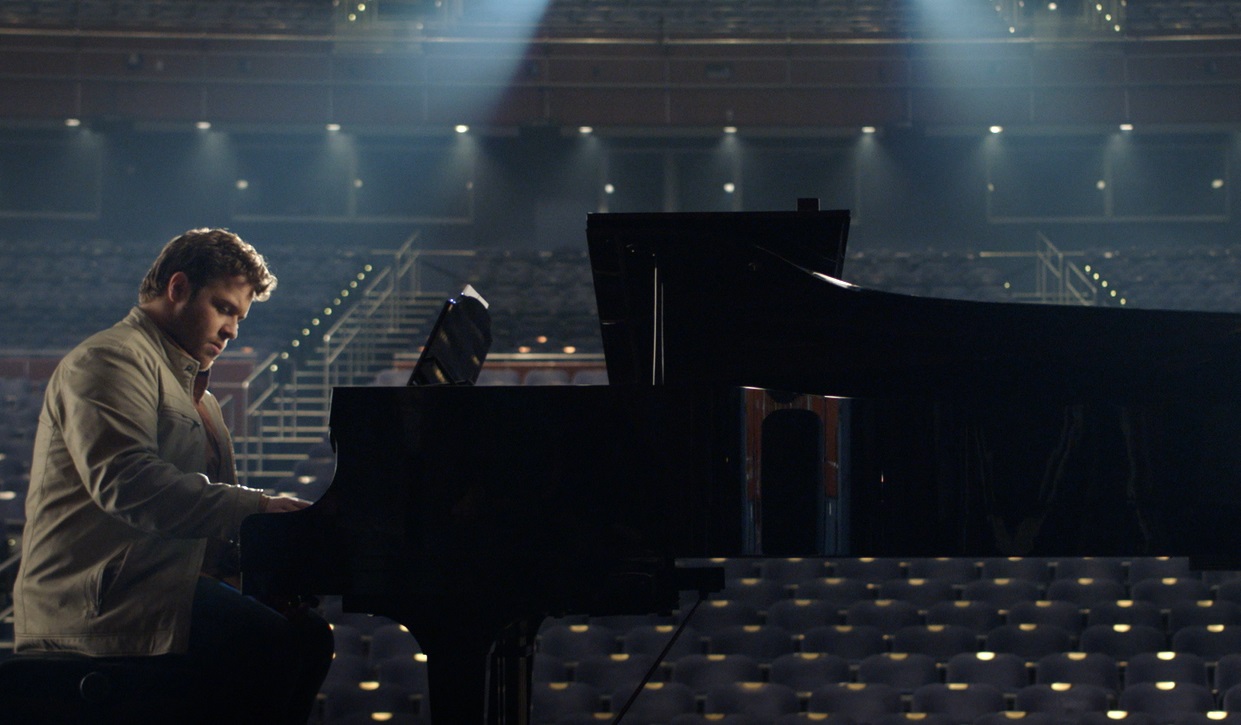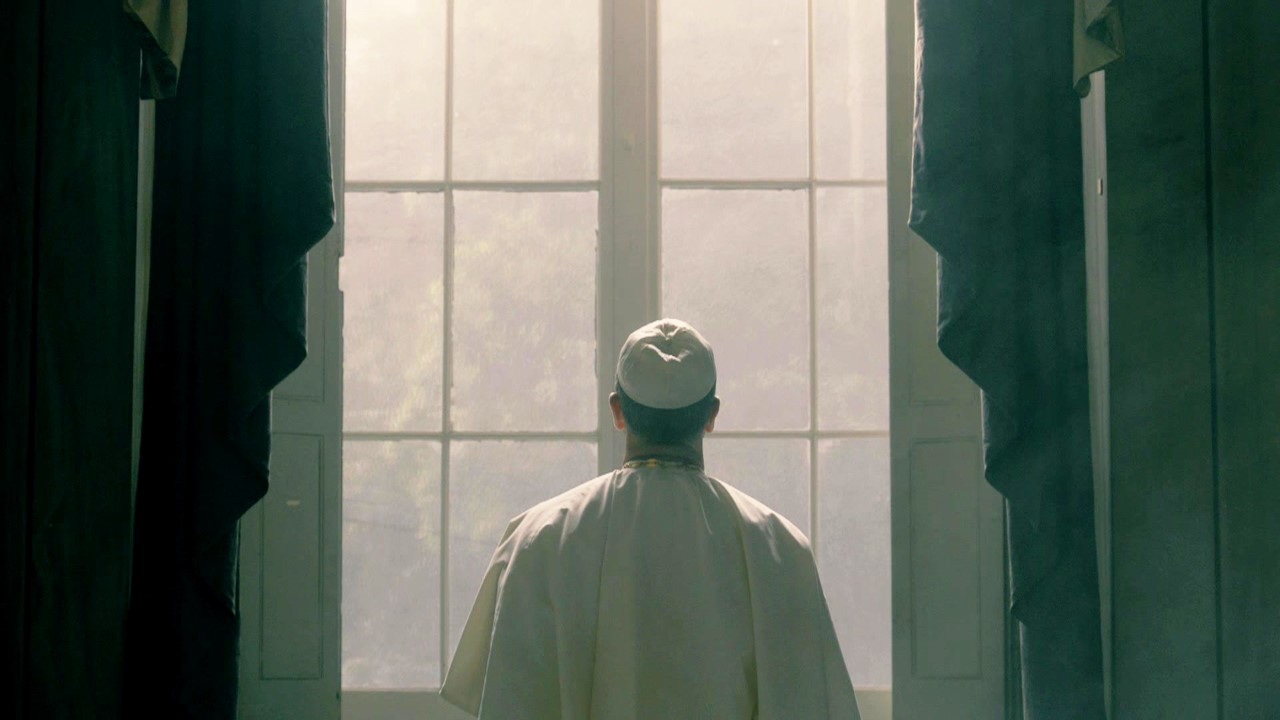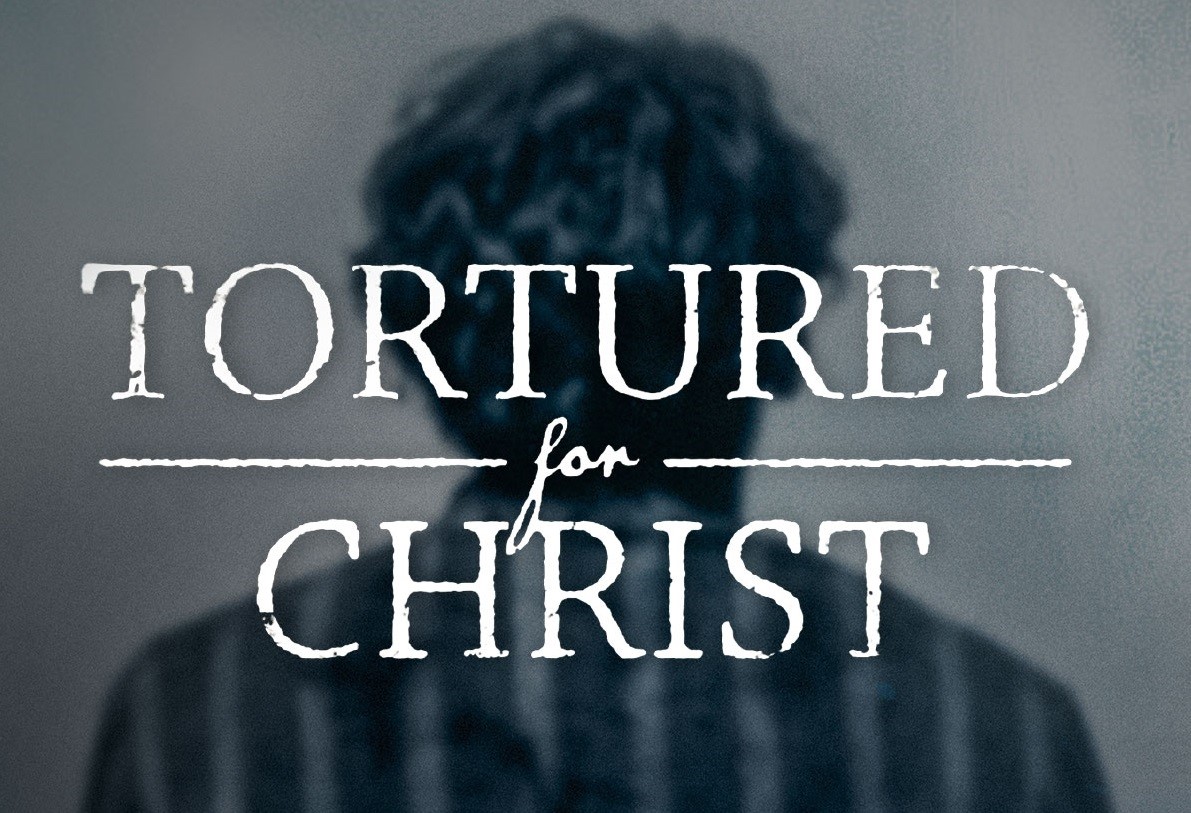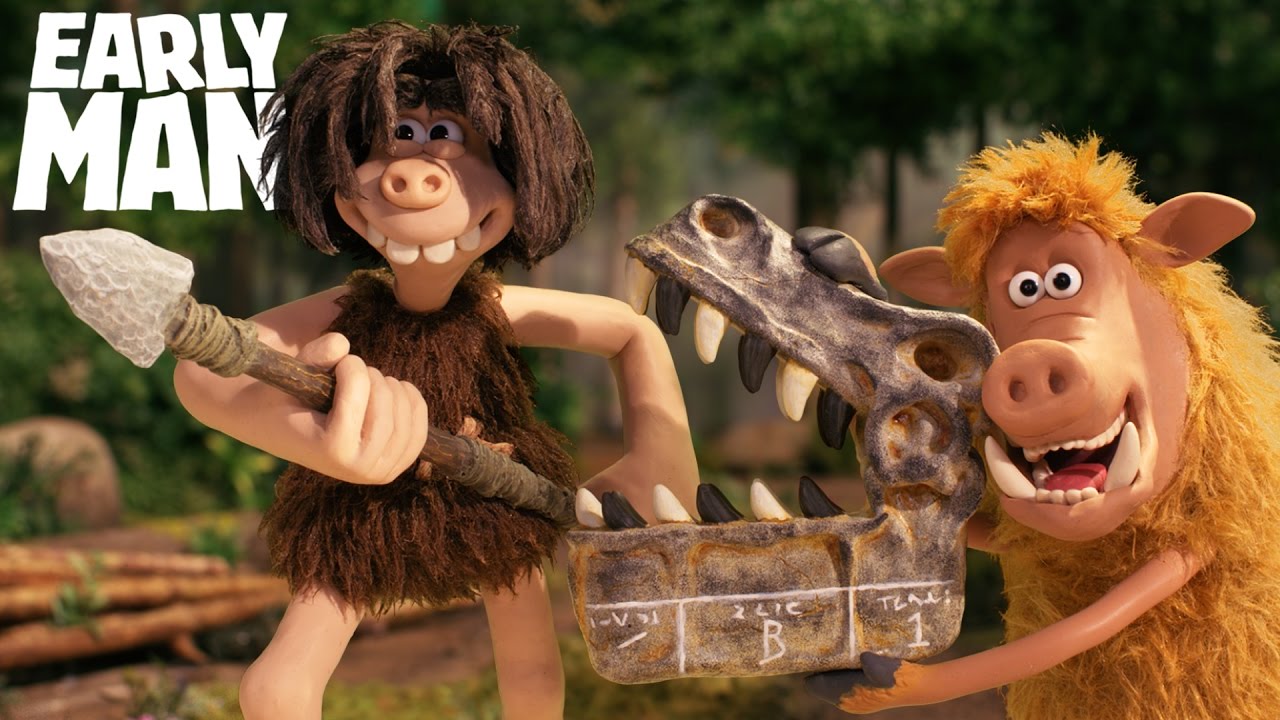
by Michael Foust | Mar 16, 2018
Bart Millard is a young boy with big dreams. Perhaps this 1980s kid will be a space pilot. Or a Jedi knight. Or a sports star.
Sadly, though, Bart’s father – always angry and often abusive – doesn’t share his son’s joy for life.
“Dreams don’t pay the bills,” his dad tells him. “Nothing good comes from it.”
To underscore the point, Bart’s father burns his son’s space helmet – the homemade one he made out of cardboard – in an outdoor barrel.
Such hate-filled antics are not uncommon. During the day, Bart endures his father’s verbal and physical abuse. At night, Bart lies in his bed and listens to music, hoping that his unstable father – and his belt – simply stay away.
Bart is living a nightmare, and it doesn’t improve during his high school years, either. When Bart’s father breaks a kitchen plate over his teenage son’s head, Bart realizes he’s had enough. He leaves home with dreams of being a singer – and with the hope that he’ll never see his father again.
The film I Can Only Imagine (PG) opens this weekend, detailing how MercyMe’s Bart Millard became inspired to write the 2001 song In Can Only Imagine, which remains one of the most popular tunes in the history of contemporary Christian music.
It stars newcomer J. Michael Finley as Millard, Golden Globe nominee Dennis Quaid (The Rookie, Soul Surfer) as Millard’s father, Oscar winner Cloris Leachman (The Last Picture Show, Young Frankenstein) as his grandmother, and country music artist Trace Adkins as Millard’s manager.
The movie follows the unlikely rise of MercyMe but also gives us an Apostle Paul-like conversation story in the process. As Millard’s character says at the beginning of the film about his father, “If Christ can change that dude, he can change anyone.” In the final years of his life, Millard’s dad – the same “monster” who whipped Bart so bad that he once had to sleep on his stomach – found the Lord.
I Can Only Imagine is the fourth film from directors Jon and Andrew Erwin, who also made Woodlawn, Mom’s Night Out and October Baby. It’s also their their best movie yet. The screenplay is gripping, the soundtrack is perfect, and the performances by Quaid and Finley had me squirming, laughing and crying. It’s one of the most powerful I’ve ever seen – so much so that I gave it five out of five stars.
It’s family-friendly, although it might not be appropriate for small children. (More on that below).
Warning: minor/moderate spoilers!
Violence/Disturbing
Minimal/moderate. We see a young and scared Bart lying in bed, listening to his father scream at his mom. As a young boy, Bart takes a swing at his father; his father grabs him, pushes him to the floor and considers punching him — but doesn’t. Later, when Bart is a teenager, the father breaks a plate over his head. After Bart leaves home and returns, we hear him describe one of his beatings to his father. The conversations between Bart and his father are uncomfortable to watch, but are necessary for the story.
Sexuality/Sensuality/Nudity
None. A young girl kisses a young Bart on the cheek.
Coarse Language
None.
Other Positive Elements
Tons of them, but most occur in the film’s final 30 minutes. Let’s keep this spoiler-free. You won’t be disappointed.
Other Stuff You Might Want To Know
Bart’s mom leaves the family to escape the father’s abuse. We see someone pass out at a restaurant.
Life Lessons
I Can Only Imagine gives us lessons on regret, forgiveness, redemption, hope and the power of the Gospel.
Worldview
Viewed from a worldly perspective, it’s easy to scoff at the central message of I Can Only Imagine and proclaim: “Any man who beats his family doesn’t deserve forgiveness.” And that’s true. Bart’s dad didn’t deserve forgiveness. But neither did Paul after he jailed Christians and watched them murdered. Or Peter after He denied Christ. Or David after he committed adultery and had a man killed. None of us deserve forgiveness. None of us are righteous before a Holy God (Rom. 3:10-12).
But the Gospel message is powerful because of is power. It’s not limited to the “little” sins. It covers the “big” ones, too.
The Good News is for the whole world – even for the worst among of us. Even for an abusive father who finds redemption in his final moments of life.
What I Liked
Bart’s quirky actions. The movie’s redemptive theme. I could watch the final 30 minutes over and over again. Also, the period music from the 1980s, along with the rest of the soundtrack, complement the film well. Finally, Quaid, Finley and Adkins are marvelous in their roles.
What I Didn’t Like
Nothing.
Discussion Questions
- If you were God, which sins would you refuse to forgive? Why?
- What can we learn about the gospel by studying the life of Bart’s father?
- Why do you think the song I Can Only Imagine was (and is) so popular?
- Could you have forgiven Bart’s father? Why did he come around to forgive his dad? How does sickness and death impact our ability to forgive and heal?
I Can Only Imagine is rated PG for thematic elements including some violence.
Entertainment rating: 5 out of 5 stars. Family-friendly rating: 4 out of 5 stars.

by Michael Foust | Mar 9, 2018
What do you get when you produce a six-part series about the Pope that even a history-loving Southern Baptist might enjoy?
Answer: CNN’s Pope: The Most Powerful Man In History, which begins airing Sunday (March 11) at 10 p.m. ET/PT. It is narrated by actor Liam Neeson and follows the papacy, from its beginnings to the modern day. It includes interviews with Cardinal Donald Wuerl, the archbishop of Washington, D.C.; Bishop Paul Tighe, the secretary of the Pontifical Council for Culture; and Eamon Duffy, Cambridge University professor and expert on the papacy. Congressman Jeff Fortenberry (R.-Neb.) also is interviewed.
It includes several left-leaning scholars, too, but from what I saw in the first two episodes I screened, they get most of the history right.
First things first, though: Peter wasn’t the first Pope, and he wasn’t Catholic (or Baptist), either. He was simply an apostle and a devoted follower of Christ. But once you get past that mammoth divide, CNN’s Pope is a pretty good church history lesson, even if at light speed.
“Peter preaches that Jesus Christ died for the sins of man, and accepting that truth is the key to salvation,” Neeson said.
We learn that first-century Christians were seen as a threat to the Roman Empire, and that Christians taught that all people – even slaves – had worth. We then hear scholars discuss the Edict of Milan (which legalized Christianity in 313) and the Nicene Creed in 325.
Viewers learn about Pope Leo III’s alliance with Charlemagne (A.D. 800), the split between Catholicism and the Orthodox church (A.D. 1054), and the Crusades.
Martin Luther and the Reformation receive fair treatment, too. (Luther, we’re told, was horrified by the selling of indulgences and – unlike the Catholic Church – believed that salvation was a “free gift.”)
I can’t vouch for the episodes I didn’t screen. But if you like history – and specifically church history – CNN’s Pope may be worth a watch.
Recommended resources for studying church history: Church History In Plain Language (Bruce Shelley); Christian History Made Easy (Timothy Paul Jones).

by Michael Foust | Mar 9, 2018
Meg is a timid, insecure girl living in a world that doesn’t embrace such flaws. At school, she gets ridiculed. At home, she lays awake at night and wonders why she’s not liked.
Even the principal thinks she’s a bit awkward.
“You shut everybody out, and then wonder why they don’t like you,” he tells her.
But Meg knows where her life went wrong. It began four years earlier when her father – a brilliant-but-misunderstood NASA scientist – went missing. Most assume he’s dead, but Meg is holding out hope he’s alive … somewhere. If he could be found, she tells the principal, “the world would make sense again.”
Then one day, otherworldly beings start visiting her home. One is called Mrs. Whatsit, another Mrs. Who and still another Mrs. Which. They tell Meg and her brother, Charles Wallace, that their father – “Mr. Murry” – may be alive but lost in another part of the universe. If Meg, Charles and their friend Calvin will join the search, they just might find him!
Disney’s A Wrinkle In Time (PG) opens in theaters this weekend, approximately 56 years after Madeleine L’Engle’s novel by the same name was released. It stars Storm Reid (12 Years A Slave) as Meg, Oprah Winfrey (The Butler) as Mrs. Which, Reese Witherspoon (Legally Blonde) as Mrs. Whatsit, and Mindy Kaling (Inside Out) as Mrs. Who.
The book and film get their name from the father’s belief that time and space can be “folded” or “wrinkled,” allowing for space travel through billions of light years in only a few seconds. This is done by something called a “tesseract,” which involves harnessing the power of the mind.
As Meg, Charles and Calvin crisscross the universe and search for Mr. Murry, they soon discover they also must defeat the evil “It” – a dark energy force that can spoil everything that is good.
A Wrinkle In Time is family-friendly in the common use of the phrase, but is it any good? I’m sorry to say it’s not. It’s heavy on eye candy and short on emotion and a plot. The first third of the movie is passable, but then we’re placed on a galaxy ride that leaves too many questions unanswered: Why is the father lost? Why can’t he get back by himself? Why is it up to the kids to do all of that?
Then there’s the worldview. The book had its problems, yes, but was full of Christian references and themes. Yet they were stripped from the film. In their place, we are left with a mixture of science fiction, Eastern mysticism and pantheistic pablum.
Warning: minor spoilers!
Violence/Disturbing
Minimal. One character hits another character in the face with a basketball. In a scene that might trouble small children, Meg and Calvin are chased through the woods by an evil-looking dark force (it looks like a sand storm); it turns into a monstrous tornado.
Sexuality/Sensuality/Nudity
Minimal. Meg’s mom and dad hug. We hear the word “naked,” but it’s used in reference to Mrs. Whatsit changing from a human to a flying creature. (We don’t see any flesh.) Calvin and Meg grow to like one another romantically, but they never kiss. (They hug.) A beach scene shows a couple of women in bikinis. A man and woman kiss at the end.
Coarse Language
None. We hear “dang,” “buttocks,” “naked” and “shut up” (twice).
Other Positive Elements
We see Meg’s father and mother express unconditional love for their children. Adoption is shown in a positive light. (Charles is adopted.) Meg refuses to leave her brother when he is in danger. Calvin stands up for Meg and tells her he’s not embarrassed to be seen with her. Meg gains courage to be herself and refuses to change her ways just to fit in with her snobby friends.
Other Stuff You Might Want To Know
Bullying is a major theme; on the anniversary of the disappearance of Meg’s father, her classmates post a note on her locker that reads: “Happy anniversary. … If only you’d disappear, too.” We hear a reference to someone being “billions of years” old.
Life Lessons
A Wrinkle In Time gives us lessons on courage (Meg, others), standing up for what is right (Calvin, Meg), dealing with grief (Meg), the distinctiveness of each person (something Mrs. Which says), workaholism (Meg’s father) and being yourself (Meg).
Worldview
A Wrinkle In Time never mentions God or Jesus – a disappointment for those who were hoping for Christian themes. (Buddha, though, gets a nod.) The most we hear are things like “we can’t take any credit for our talents” and the question: “What if we were here for a reason?”
The rest of it is a hodgepodge of Eastern mysticism and pantheism. We’re told that the universe is a mixture of light and dark. Humans are light and the “It” is the darkness that spoils everything. We are to “become one with the universe,” Mrs. Which says.
Scripture teaches something very different: Jesus created the universe, and He is the light. (“The light has come into the world, and people loved the darkness rather than the light because their works were evil,” John 3:19). Yes, we are to “walk as children of light” (Ephesians 5:8), but that only occurs when we are reflecting Christ in our deeds and thoughts. For children, it’s helpful to consider the moon in such discussions. Is the moon bright? Sometimes, yes. But why? Because it’s reflecting the sun. In a similar way, we are to reflect the true Light.
Discussion Questions
- What does the Bible say about darkness and light? Are people dark or light?
- Are we to be “one with the universe”?
- How does grief change people? What is the secret to overcoming grief?
- What does A Wrinkle In Time teach us about being yourself? When is that appropriate and not appropriate?
Entertainment rating: 2.5 out of 5 stars. Family-friendly rating: 3.5 out of 5 stars.

by Michael Foust | Mar 2, 2018
The gut-wrenching and inspirational story of Richard Wurmbrand makes its way to the big screen Monday when the film ‘Tortured for Christ’ debuts. It is in theaters for one night only.
The prison official shouts, “Give me their names!” But pastor Richard Wurmbrand, tied up in a dark-and-dingy Romanian prison torture chamber, remains silent.
His face is bloodied, and his feet scarred from relentless beatings. The guards had offered him a deal: If he hands over the names of Christians to the Communist government, he would get a reduced sentenced – perhaps even be freed. But he refuses.
“It’s only a matter of time,” the prison official tells him. “… Be reasonable. Your life belongs to me now.”
A weak Wurmbrand, struggling for breaths, responds, “My life is not my own. I belong to Christ.”
The gut-wrenching and inspirational story of Wurmbrand is well-known to Christians worldwide thanks to a series of books he wrote, but on Monday night (March 5) moviegoers will have a chance to watch his story unfold on the big screen when Tortured for Christ – based on the 1967 best-selling book by the same name — debuts. It was produced by The Voice of the Martyrs and will be in theaters only one night.
Wurmbrand was a Romanian Christian pastor in 1944 when Russian troops entered his country. Atheism became the official state religion, and those who proclaimed Christ were arrested and tortured.
Neither Wurmbrand nor his wife and children remained silent. His kids even made a game out of saying “God bless you” to the Russian soldiers. The children got away with such antics, but Wurmbrand and his wife did not. He spent 14 years in Romanian prisons and was frequently tortured. His wife, Sabina, was sentenced to hard labor.
The movie was filmed in Romania with Romanian actors, and some of the scenes even were filmed in a prison where he stayed.
Tortured for Christ shows Wurmbrand taking a stand for Christ from the get-go. When other church leaders succumbed to Communist doctrine at a “Congress of Cults” – a large public gathering of church and government leaders – Wurmbrand didn’t back down. His wife encouraged him.
“If I speak now, you’ll have no husband,” he whispers to his wife in the film.
She retorts, “I don’t need a coward for a husband.”
Wurmbrand took the podium that day and preached the Gospel. Incredibly, he avoided immediate arrest.
Perhaps even more incredibly, Russian soldiers were open to the Good News – and many became Christians due to his bold witness. To avoid confiscation of Bibles, Wurmbrand and his fellow believers had special Bibles printed with Karl Marx on the cover. “Marx on the cover, Jesus in the pages,” he says in the film. He even baptized one Russian soldier in his bathtub.
He was preaching on borrowed time, though, and he eventually was arrested and put in prison. The Russians assumed he would cut a deal and give them the names of all the Christians, but he refused.
Thus began 14 years of torture. He was beaten. He was burned. He spent three years in solitary confinement. In one particularly horrifying incident, he was forced to stand for hours and days in a box surrounded by sharp spikes. And through it all, he refused to recant his faith.
The film isn’t easy to watch, even if it inspires you. How many of us would be willing to face a gruesome death for Christ? How many of us would continue praying in a cell, knowing that such an action would result in physical punishment? And how many of us would be filled with so much joy in prison that we would sing hymns and make music with our prison chains – as he did?
Tortured for Christ is part documentary, part film. An actor voicing Wurmbrand’s words narrates it. It is unrated, although it likely would have received a PG-13 based solely on the violent images. It’s not gory, though. Most of the torture is implied. The film contains no coarse language or sexuality.
“We loved the Russians so much that we risked everything to bring them the Gospel,” Wurmbrand says in the film.
Wurmbrand’s story is one that all Christians should know.
Tortured for Christ is unrated. It is not appropriate for young children. Find a listing of theaters at torturedforchrist.com
Entertainment rating: 4 out of 5 stars. Family-friendly rating: 3.5 out of 5 stars.

by Michael Foust | Feb 23, 2018
The same studio that gave us “Chicken Run” (2000) and “Shaun the Sheep Movie” (2015) has a new movie: “Early Man.” Our reviewer says it isn’t as enjoyable as that latter film, but it’s still funny.
“Dug” is a smart, forward-thinking boy living in a village of mostly unmotivated and dim-witted people.
Such is life for a young caveman in the prehistoric Stone Age. He wants to hunt buffalo, but his fellow tribesmen are content with small rabbits. He wants to fight the army that attacked his village, but the tribesmen want to retreat.
Then there’s the subject of football – or as we Americans call it, soccer. Dug knows very little about this new sport, but he’s confident that he and his Stone Age villagers can master it. He’s so confident, in fact, that he challenges the adjacent (and more powerful) Bronze Age city to a match.
If “Real Bronzio” wins the game, then the Bronze Age kingdom will continue ruling over Dug’s Stone Age village. But if the Stone Age villagers win, then they will be able to live in peace in their beautiful, lush valley – and the Bronze Age army will have to leave them alone.
It’s all part of the stop-action animated film Early Man (PG), which is in theaters and stars Eddie Redmayne (Les Miserables) as Dug, Timothy Spall (Mr. Turner) as Chief Bobnar, and Tom Hiddleston (The Avengers) as the evil Lord Nooth.
It was directed by Nick Park of Aardman Animations, the stop-action studio that also gave us Chicken Run (2000) and Shaun the Sheep Movie (2015). Early Man isn’t as enjoyable as that latter film, but it’s still funny.
The film opens in the “neo-Pleistocene Age, near Manchester, around lunchtime,” with dinosaurs living alongside humans, when an asteroid strikes earth. That asteroid, it turns out, is shaped like a soccer ball, and people begin kicking it. The film then fast-forwards to the Bronze Age, with Lord Nooth and his army soon ransacking the Stone Age village.
Despite its tame PG rating, Early Man has a few elements that may concern some families.
Violence/Disturbing
Minimal. An asteroid hits earth, presumably killing lots of life. We see people fall into a volcanic-like pit. Mammoths, dressed in bronze and topped with soldiers, attack a village. They toss spears at the citizens (none hit their target). Someone at the soccer match gives the throat-slashing symbol. Lord Nooth tells a solder to “kill him … slowly.” (The person doesn’t die.) A giant duck attacks the villagers. We see images of people working in a mine, and we see a shadow of a solder whipping someone. During the soccer game, the action gets out of hand and extra-physical.
Sexuality/Sensuality/Nudity
Minimal. Cavemen appear in various amounts of dress and undress, sometimes only in a loincloth-type garb. During a soccer match, we see a player nude from behind (we see his bottom), and then again we see him from the front, with his private parts covered. We also see cave drawings of cavemen mooning other players. One of the Stone Age women gets excited that the men are wearing “tight shorts.”
Coarse Language
None, other than stupid (3), crap (1) and screw it up (1).
Other Positive Elements
As the Stone Age villagers are preparing to hunt, the chief says a prayer. “We give thanks,” he says at the beginning.
Other Stuff You Might Want To Know
The giant duck poops all over a character. When Dug’s soccer ball is flattened, he breaks into the Bronze Age city’s stadium to steal a ball. Someone eats “primordial soup.”
Life Lessons
It’s tempting to label Early Man a pointless silly movie, but it does give us lessons on teamwork (the Stone Age team), humility (a major character late in the film), good sportsmanship (several characters), and girls in sports (a Bronze Age girl joins the Stone Age team because she isn’t allowed to play on her home team).
Worldview
For Christians who hold to a young earth view of creation, Early Man is a mixed bag. It shows dinosaurs and humans living at the same time – something that young earth creationists would embrace but mainstream scientists would reject. Yet it also promotes the idea that mankind slowly gained intelligence over time – something that creationists discount.
No doubt, the filmmakers developed a plot they didn’t intend to be taken seriously. It’s up to families to decide the best approach for this movie.
What I Liked
The humor. Well, most of it. I’ve always enjoyed Aardman Animations’ films. They’re funny, creative and largely family-friendly. The stop-action animation is – as always – amazing.
What I Didn’t Like
The animated rear ends. Why are filmmakers so infatuated with bottoms?
Discussion Questions
- What does Early Mean teach us about teamwork? About sportsmanship?
- In the real world, did mankind gain intelligence slowly over time – as the movie implies? What does Scripture teach?
- Describe Lord Nooth’s actions as a referee. In the real world, who makes the rules of a game? Can a referee make up the rules?
Entertainment rating: 3 out of 5 stars. Family-friendly rating: 4 out of 5 stars.
Early Man is rated PG for rude humor and some action.




